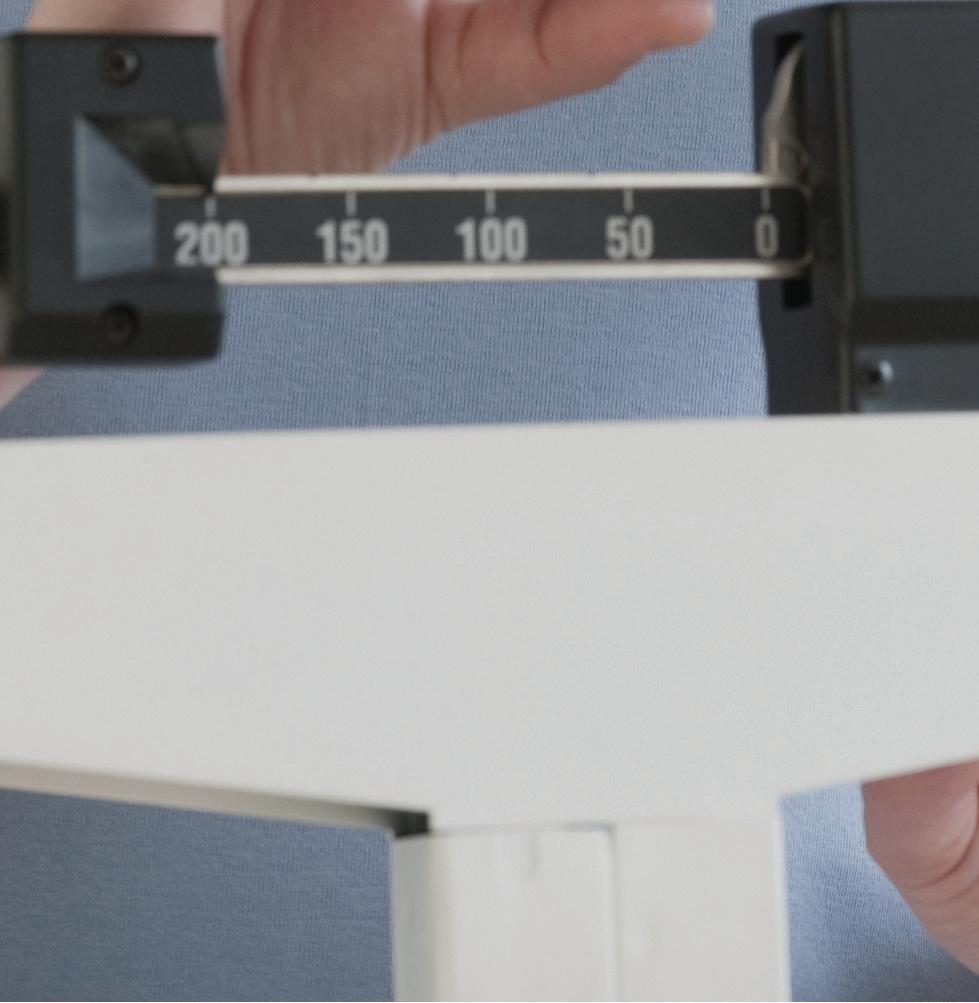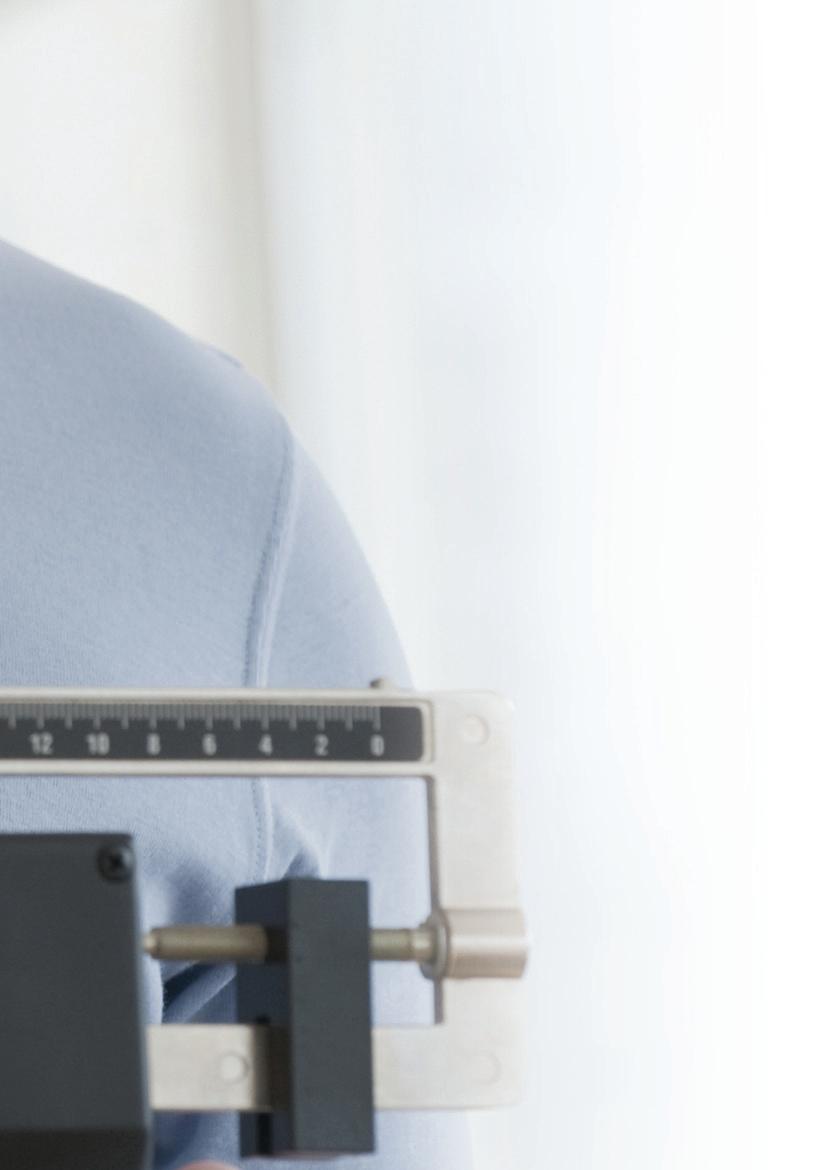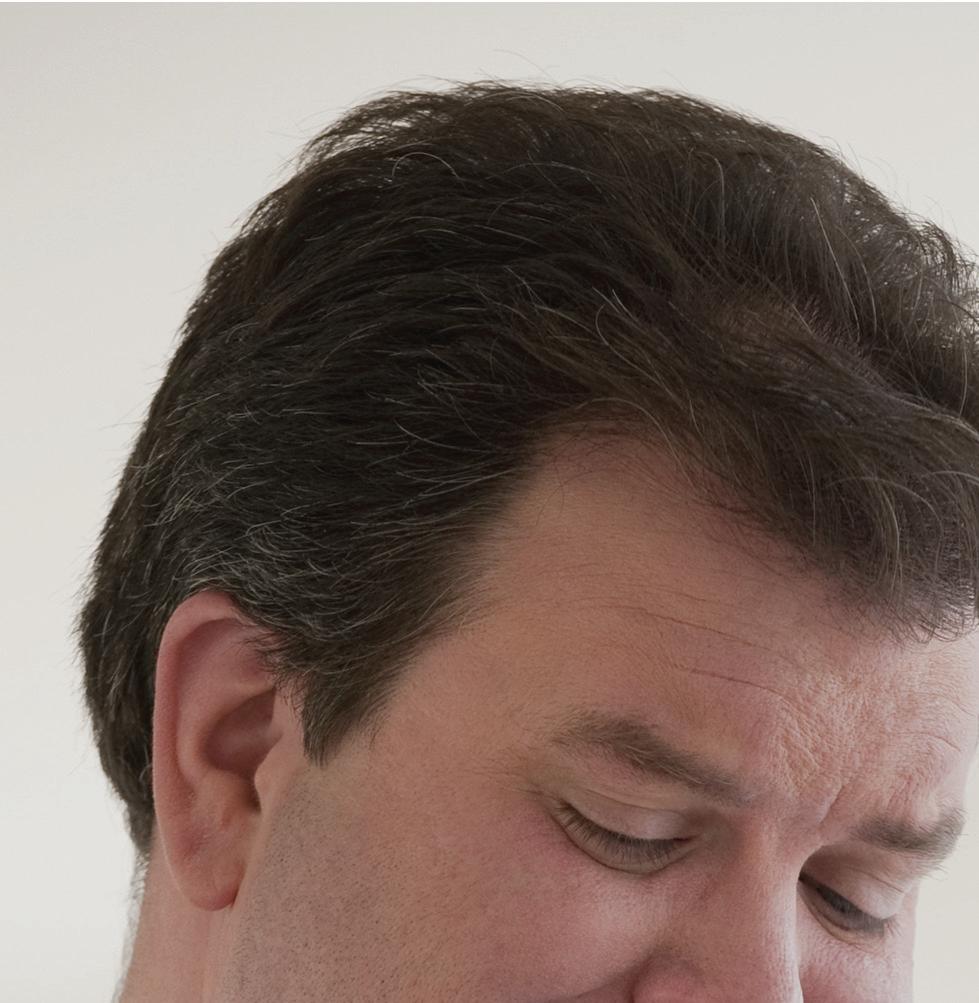
4 minute read
Health Improvement Through Weight Loss Surgery Treating so much more than
from February 01, 2023
by Beacon Media
The Number On The Scale
A new year, a new beginning. With the arrival of 2023, many of us use this annual marker to stop and think about where we have been, and where we’re going. It’s a chance to reflect on our wellbeing and to make plans to improve the quality of our lives by improving our health.
For many, weight loss is a health improvement goal. It’s a formidable challenge, because our body’s weight regulation mechanisms are so complex. The dangers of elevated body weight often sneak into life slowly. The number on the scale may be just the first sign of serious health issues on the horizon.
First, let’s talk about the dangers of obesity. The metabolic dysfunction that occurs in obesity often leads to something we call “metabolic syndrome.” This is a cluster of conditions increasing the risk of heart disease, stroke, diabetes, cancer, and other serious chronic health conditions.
Obesity is not a disease of a number on a scale, it is a disease of our body’s metabolism. Metabolism is the set of life-sustaining chemical reactions that regulate our body’s energy consumption, energy expenditure, and energy storage.
So, what can you do to combat
Staying Healthy
by DR. JORDAN HEBERT Medical Director of Robotic Surgery at Kent Hospital, Care New England Center for Surgical Weight Loss

obesity and start living a healthier life?
Decades of studies have shown that the most effective and longest lasting treatment option is weight loss surgery – aka: bariatric surgery or metabolic surgery.
While all these names refer to the same set of surgical procedures, I feel that the term “metabolic surgery” best encompasses the true purpose and potential of what surgical weight loss offers to patients.
More than just a procedure to lower weight; metabolic surgery is truly about lowering the serious risks of chronic medical conditions and premature death that occur with obesity. On average, patients with obesity die several years earlier than patients without obesity.


Surgical weight loss has also been shown to improve severe medical conditions including, but not limited to, high blood pressure, diabetes, sleep apnea, infertility, depression, degenerative joint disease, cancer, and more.
The complexity of obesity and metabolic syndrome treatment deserves the support of a multidisciplinary team. At the Center for Surgical Weight Loss at Care New England, patients have a comprehensive center for beginning their surgical weight loss journey– starting with checking your body mass index (BMI), informational webinar, and an individualized consultation with one of our accredited bariatric surgeons.
To get started on your weight-loss surgery journey visit: https://www. carenewengland.org/bariatric/
Disclaimer: While I am a doctor, I am not your doctor. The content in this blog is for informational and educational purposes only and should not serve as medical advice, consultation, or diagnosis. If you have a medical concern, please consult your healthcare provider, or seek immediate medical treatment.
Ensuring Body Balance to Avoid Neck and Back Injury “The Opposite Hand and Foot Rule”
Ensuring body balance when performing activities, especially in standing, requires coupling of the opposite hand and foot: “The Opposite Hand and Foot Rule.”
During an activity that involves reaching, the leading action hand is coupled with the leading opposite foot. By first placing the opposite foot of the leading hand in position, the base of support is established to allow for a balanced and safe movement as the leading hand is brought forward.
By placing the opposite foot forward the pelvis and lower trunk is fixed in position so that the opposite hand and upper trunk can best perform the action allowing for minimall strain and maximal stability on the spine to “Avoid Neck and Back Injury.”
One obvious example is: Opening a Door with the right hand. First place the left foot forward as the right hand reaches to push or grasp the door handle.
Another example is picking up a piece of paper from the floor with the right hand. First place the left foot forward close to the piece of paper. Reach forward with the right hand as you bend at the hips and knees, keeping your spine straight (ears kept in-line with the shoulders and hips).

By best example is shoveling. When holding the shovel with the left hand closest to the spade (lower end of the shovel) the right foot is kept forward as the leading foot. This keeps your lower pelvis and base of your spine properly positioned and stabilized as the opposite upper trunk and hand leans forward performing the shovel action. The same holds true for sweeping. The lower hand on the broomstick is matched with the opposite foot forward.
“Proper Body Mechanics or body balance is learned and practiced and necessary for maximal work efficiency with minimal biomechanical strain. Keeping a wide base of support, maintaining the spine is neutral (straight) and using the opposite hand and foot rule ensures maximum neck and back stability during the reaching activity. Upper and lower trunk counter rotation is encouraged during the action which maintains the spinal joints, ligaments and muscles in best alignment ensuring work efficiency with minimal spine strain.
Unfortunately, unless you prepare yourself before the movement or activity (use the opposite hand and foot rule and maintaining neutral spine), you are most likely to perform the action incorrectly and more likely to strain your neck and back.
This is so because our motor development process involves the coordination and integration of individual movement reflexes that must be integrated (balanced) at the spinal cord and brain level. During strenuous or repetitive activities of daily living these reflexive movements dominate our actions making us susceptible to physical inefficiently and neck and back strain. Therefore understanding and implementing the “opposite hand and foot rule” along with a prepared wide base of support (opposite foot forward) while maintaining a neutral (straight) spine (ears in line with the shoulders and hips) will ensure safety and minimize neck and back injury.
Dr. L’Europa is clinical director of Spinetech located in Knightsville Cranston.



Dr. L’Europa is in his 35th year of private practice as a Doctor of Chiropractic and Registered Physical Therapist and considered an expert in clinical biomechanics and kinematics.











